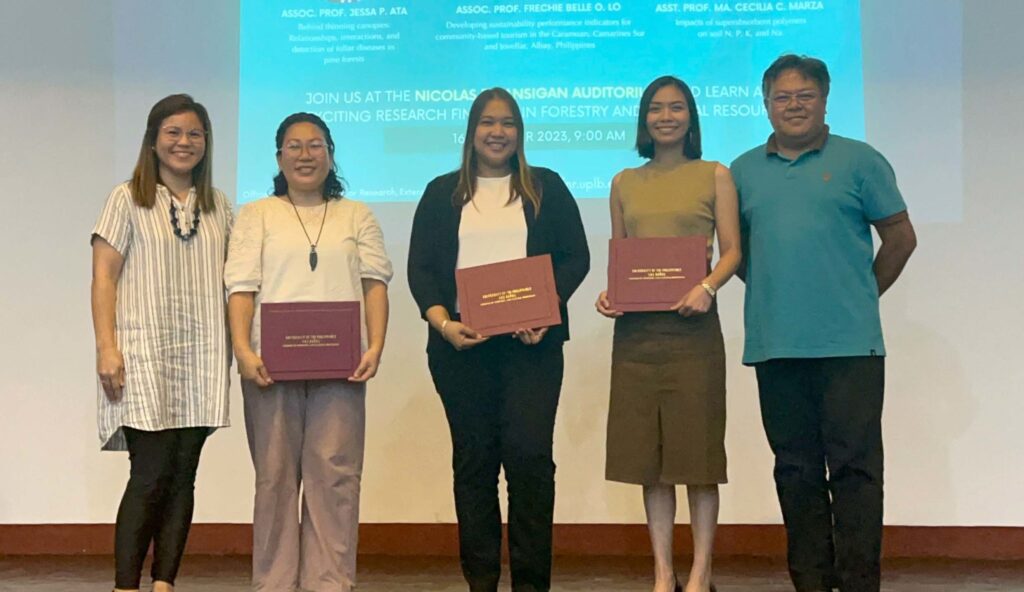
The College of Forestry and Natural Resources (CFNR), through the Office of the Coordinator for Research, Extension, and Linkages (OCREL), in collaboration with the Research and Extension Committee of the college, hosted its 9th Saliksik-Hayagan.
This annual research conference, which showcases current research in forestry and natural resources, was held on Oct. 16 at the Nicolas P. Lansigan Auditorium in CFNR.
CFNR’s College Secretary, Dr. Rosalie C. Mendoza, stressed the importance of communicating research by quoting Kurt Lewin, “There is no research without action and no action without research.”
For this year’s Saliksik-Hayagan, three CFNR faculty members presented their recent research findings.
Dr. Jessa P. Ata of the Department of Forest Biological Sciences discussed her paper “Behind thinning canopies: Relationships, interactions, and detection of foliar diseases in pine forests.”
Dr. Ata said that molecular tools aid in understanding further the potential threat of Lophodermella needle pathogens amid climate change.
Her research found that molecular markers aid in the monitoring and assessing of needle diseases to predict the damage in forest ecosystems. Since her study was conducted in Colorado, USA, Dr. Ata hopes to pioneer research in this area in the Philippines.
For her part, Dr. Frechie Belle O. Lo of the Institute of Renewable Natural Resources (IRNR) discussed the development of sustainability performance indicators for community-based tourism in Caramoan, Camarines Sur, and Jovellar, Albay, Philippines.
Her research showed that identifying key indicators would help community stakeholders analyze negative driving forces and strategize actions to maximize positive results for tourism sustainability. She recommended the need for stricter implementation of tourism policies.
Finally, Ma. Cecilia C. Marza, an assistant professor at the IRNR, presented her study on the impacts of superabsorbent polymers (SAP), the material used for diapers, on soil nitrogen (N), phosphorus (P), potassium (K), and sodium (Na). She revealed that using SAP showed promising results on soil dynamics of N, P, K and Na.
According to her, the root and stem of the seedling treated with NPK + SAP showed an increase in Na content. In concluding her presentation, Marza reminded everyone of the need to follow the Solid Waste Management Program guidelines concerning garbage disposal.
Saliksik-Hayagan was highly attended by CFNR faculty, staff, and students. In his closing remarks, OCREL Director Tomas D. Reyes, Jr. encouraged the audience to undertake innovative research studies. (Regina A. Mendoza, CFNR-CIMRC)
